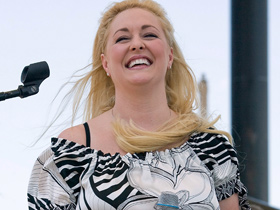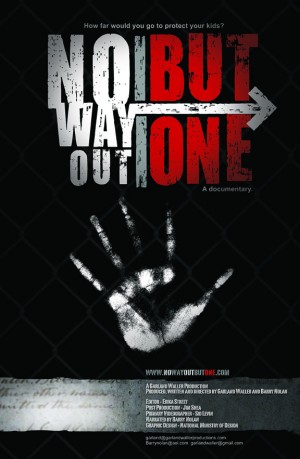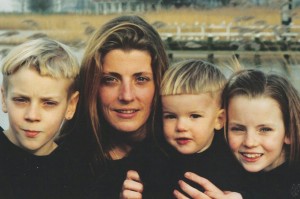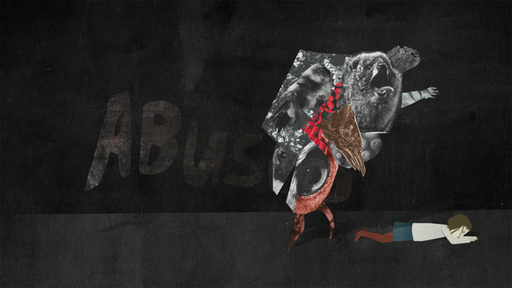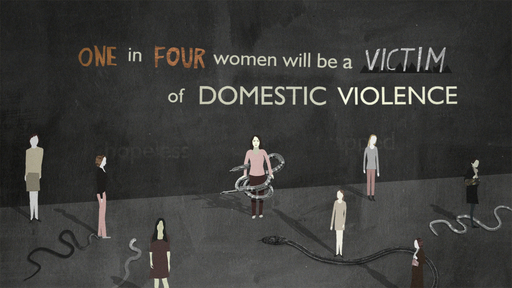(Battered Mothers, Abused Children are Being Further Battered and Abused by the US Courts failure to let Domestic Violence Mothers Leave With Their Children. Many Ask, “Why Doesn’t She Just Leave?” When it comes to Domestic Violence, besides all the other very unsafe reasons those with children will loose their children to the very animal who hurt them and their children. Many mothers,(most) have never seen their children again after the Courts gave their child[ren] to the Abusers. Most Children, if the survive, end up just like they were taught raised and reinforced by the Courts, as abusers themselves for boys and victims for girls. That is not county all the other trauma related issues. This has passed beyond just injustice but has stepped full fledge in Human Rights Violations. It truly is like the holocaust, the destruction of women and their children by the USA, Sanctioned Genocide Against Mothers and their Children. Right in Plain View, See: Mothers Day Law Suit filed Against the U.S. at the Inter American Commission Human Rights. (still pending)
From Times –Up!! Attorney Barry Goldstein

photo courtesy of Family Court Crisis-Abusers Getting Custody!
By Barry Goldstein
Protective mothers have been complaining about mistreatment by the custody court system, but have routinely been dismissed as “disgruntled litigants.” As recently as the beginning of the Battered Mothers Custody Conferences in 2004, there was little professional support for protective mothers. The mothers’ complaints have now been confirmed and supported by the domestic violence community, many women’s organizations, numerous governmental agencies, many in the academic community and a substantial body of research such as contained in our book DOMESTIC VIOLENCE, ABUSE and CHILD CUSTODY.
Last summer at the NCADV Conference, Dr. Daniel Saunders of the University of Michigan and some of his colleagues presented their findings from a major Department of Justice study that confirms the findings in our book and other research that the present custody court practices for domestic violence cases are deeply flawed. The publication of these findings has taken longer than expected as Dr. Saunders and the Justice Department seek to carefully present the information in a clear and accurate manner, but they should soon be available on the Department of Justice web site. Many of us who seek to reform the broken custody court system are excited about this study because it should be difficult for the courts to dismiss or ignore because of where it comes from. Significantly, the findings are incompatible with a continued belief that the present practices are working for the benefit of the children the courts are supposed to protect.
Custody Courts Frequently Disbelieve Valid Abuse Complaints
Custody courts have a particularly poor record in responding to domestic violence cases. The research demonstrates that court professionals reject a high percentage of valid complaints by protective mothers. This problem has been confirmed in many ways. It is confirmed based on the frequency of mistaken outcomes. Although battered mothers make deliberately false allegations only one or two percent of the time, in contested custody cases the alleged abuser wins custody or joint custody over seventy percent of the time. Subsequent events regularly confirm courts’ mistakes. This occurs when men found safe by the court professionals are later convicted or otherwise found to have to have committed domestic violence, sexual abuse, murder or other similar crimes.
The revelations of the Courageous Kids Network further demonstrate the frequency in which courts fail to recognize valid complaints of abuse. Courageous Kids are young adults who have aged out of their custody orders and decided to speak out about the harm caused by these orders. The context is important in understanding their stories. These are cases in which the court disbelieved the mothers’ abuse allegations and gave the fathers complete control. The children have been threatened, coerced and punished if they continue to complain about their father’s abuse or seek a relationship with their mother. In other words the fathers have had tremendous assistance in silencing the children. Accordingly the children now speaking out represent a small minority of those mistreated by fathers the court believed were safe. The descriptions by the Courageous Kids demonstrate the fathers deliberately sought to hurt the mother and children based upon their belief system that the mother had no right to leave them. The children have had little or no contact with their mothers often for many years so we know the mothers could not be influencing the children’s decision to speak out about the fathers’ abuse. These are all too common examples of cases in which the court professionals failed to believe valid allegations of abuse.
The research not only demonstrates the fact that the custody courts get a large majority of domestic violence cases wrong, but also that the standard practices used by court professionals are deeply flawed and make it difficult for judges to recognize legitimate complaints about domestic violence and child abuse.
Court professionals routinely discredit allegations of abuse based upon factors that are not probative. At the same time these professionals do not understand the importance of looking to the abusers’ patterns of controlling and coercive behavior in order to recognize domestic violence. The court professionals often make the mistake of considering each incident and each allegation separately. Genuine domestic violence experts understand the importance of context in recognizing domestic violence, but the mental health and other professionals relied on by the courts do not understand the importance of context and thus make it more difficult to recognize valid allegations of abuse.
One of the big obstacles to recognizing valid abuse complaints is the common use of mental health and other professionals without expertise in domestic violence. The main purpose of considering domestic violence in custody cases is to protect the safety of children. Nevertheless the evaluators relied on by custody courts rarely know how to conduct a safety assessment or what behaviors have been associated with higher lethality and other dangers. The evaluators do not understand domestic violence dynamics and often are unfamiliar with the effects of domestic violence on children or other information based upon the specialized body of scientific research that could be used to better understand domestic violence issues and recognize truthful allegations of abuse.
The new Department of Justice study helps explain why the evaluators and other professionals relied on by custody courts routinely fails to recognize domestic violence. The study found that most evaluators and other professionals relied on by the courts do not have adequate domestic violence training and those with inadequate training are more likely to believe in the myth that women frequently make false allegations of abuse to gain an advantage in litigation. The professionals who believe this myth, in turn are more likely to make recommendations that harm children. In other words judges have little chance to protect the children under their control as long as they rely on these unqualified professionals and tend to believe their deeply flawed analysis.
Judges often become defensive when protective mothers or their attorneys request that any evaluator or other court professional be required to have domestic violence expertise in order to be appointed. We have repeatedly seen judges refuse to listen to domestic violence experts offered on behalf of protective mothers. The courts often focus on the need for a mental health degree even though the academic training for most mental health professionals included no or virtually no domestic violence instruction and the law does not require advance degrees to qualify as an expert (a common example is a mechanic without a high school degree who can testify as an expert in automotive repair based on experience and training).
In recent years most court systems have encouraged and usually required some domestic violence training for court professionals. This is a good thing but has often been implemented in ways that undermine the purpose. Many of the trainings include substantial misinformation such as the belief most contested custody cases are “high conflict” when the research establishes a large majority are really domestic violence cases. Some of the trainings even include Parental Alienation Syndrome (sometimes by another name because of its deserved notoriety) even though it was recently again rejected for inclusion in the DSM-V because there is no scientific basis for it. Many of the trainings fail to include domestic violence advocates or other genuine experts in domestic violence.
We have also seen some really good programs used to train court professionals, but I have heard many trainers complain that some of the judges, evaluators and lawyers pay little attention to the valuable information presented. In one Queens County, New York case I cross-examined an experienced evaluator who went to a really excellent domestic violence training in order to qualify as a parent coordinator. They provided numerous excellent research studies that could have helped him recognize domestic violence and protect children. During my cross-examination it became clear he never read the research and was unfamiliar with the current scientific research he needed to understand the case. When I pressed him about the training he described it as “not a life changing experience.” This was a man who needed a life changing experience because he failed to recognize the obvious history of abuse by the father, demanded the mother cooperate with her abuser and when she continued to try to protect herself and her son, the unqualified evaluator recommended custody for the abusive father. The judge failed to discredit the evaluator based on his failure to read or consider the current scientific research provided at the training.
We need much more and better trainings for court professionals, but there is also the danger that attending trainings can give judges and other professionals a false sense of confidence in their understanding of domestic violence. The findings by Dr. Saunders and his colleagues that most court professionals have inadequate training in domestic violence confirms our concern that in most cases the professionals relied on by the court are not qualified to participate in a domestic violence case without the assistance of a genuine expert. Even if the judge has received good training the court is likely to be influenced by unqualified evaluators and other court professionals.
The failure to possess adequate training in domestic violence means that it will be difficult for these professionals to recognize and respond effectively to domestic violence, but the widespread belief in the myth that women frequently make false allegations of abuse is a bias that strongly undermines the cases of protective mothers. These mistakes result in frequent findings denying the mother’s abuse allegations which is exactly what the other research has found. If a professional believes the myth they will expect to see false allegations and without training in how to recognize domestic violence they have little chance to get these cases right and protect the children. Even worse, courts having found against the mothers because of the deeply flawed practices and biases are severely punishing mothers and children because the mothers continue to believe their true allegations despite the disbelief of the unqualified court professionals.
A few months ago, in this forum, I wrote an article about the extreme decisions we often see in domestic violence cases. These are decisions in which the alleged abuser receives custody and the mother who was the primary attachment figure is limited to supervised or no visitation. The primary attachment figure is the parent who provided most of the child care during the first couple of years of the child’s life. When children are separated from their primary attachment figure they are significantly more likely to suffer depression, low self-esteem and to commit suicide when older. It can never be right to separate children from their primary attachment figure unless she is unsafe such as a drug addict, someone who beats the kids or otherwise poses a danger. In most of these cases the father allowed or even demanded the mother provide child care until she decided to leave him. It should be obvious that her decision to leave a man she found to be abusive does not make the mother unsafe. Unqualified court professionals frequently limit the mother’s contact with her children based upon some version of alienation or pathologizing the mother based on psychological tests that were not made for the populations seen in custody cases. We know the diagnosis is not safety related because the mother functions fine in all other aspects of her life except interacting with her abuser and the court professionals supporting him. These are not safety issues so these extreme decisions can never be beneficial to the children.
The reliance on court professionals with inadequate training and belief in the myth takes place in the context of many other common mistakes discussed in earlier research. The courts cannot protect mothers and children in domestic violence cases if they cannot recognize domestic violence when it is present. The frequent decisions that harm children are confirmed by later findings and information, the extensive research court professionals routinely fail to consider and the new Department of Justice study and they provide multiple confirmations of the present inability of custody courts to recognize domestic violence and child abuse when it exists.
Misuse of Mothers’ Anger and Emotion
Let’s look at this issue from the mother’s perspective and in the context of her experience. These are domestic violence cases. The father usually has a long history of controlling and coercive behaviors and the mother has finally gained the courage and resources to leave her abuser in order to protect her children. She is fearful because of the many threats he made of what he would do if she left and knowledge that the most dangerous time for a woman is after she has left. She is angry at the way he has mistreated her and often the children. She may be worried about her ability to support and protect her children because her partner has been telling her how useless she is throughout their relationship.
Even if the father’s physical abuse ends when he no longer has access to the mother (which makes unqualified court professionals believe he is now safe), he continues his domestic violence through litigation abuse and often other ways. The abusers often use any contact provided by the court to seek reconciliation and/or to harass and attack her verbally or psychologically. Many women expect the courts to protect her children because the evidence is so overwhelming and instead find the court pressuring her to cooperate with her abuser and punishing her if she tries to protect her children from a man they have found to be hostile and dangerous. In other words she has good reason to be angry and emotional and in fact this would be a normal reaction to her experiences.
The research contained in our book and elsewhere supports this understanding and analysis. We discussed the common mistake of custody courts that treat the mother’s actions as a litigant as if they were an indication of her behavior as a parent. Over forty states and many judicial districts have created court sponsored gender bias committees. These committees have found widespread bias particularly against women litigants. One of the common examples of gender bias was blaming women for the actions of their abusers. One of the typical examples of this bias is when courts blame mothers for their anger and emotion caused by the father’s mistreatment of them and their children. In many cases the abusers deliberately harass or pressure them shortly before a court appearance is scheduled in order to obtain an emotional reaction the court is likely to misunderstand. Abusers tend to be extremely manipulative and so after their abuse that the judge does not see, come to court calm and cooperative. Court professionals are often fooled by this act.
The new Department of Justice study confirms what we said in our book and other similar research. Dr. Saunders found that court professionals frequently treat mothers’ anger and emotion as far more important than it actually is in terms of the well being of children. These professionals may be uncomfortable with the mothers’ emotions particularly if she criticizes their response to the father’s abuse. Clearly these are difficult and unpleasant issues to confront. The misinformation treating contested custody as if it were “high conflict” when it is actually domestic violence contributes to the misunderstanding of the mothers’ anger and emotion. The professionals are focused on forcing the parties to cooperate even though this is not the best approach for children. When the parties have difficulty cooperating and certainly in domestic violence cases, parallel parenting is a more effective approach for children. The problem, as demonstrated by the Saunders’ study is that these professionals are focused on their beliefs and preferences rather than research about what works best for children. The custody courts did not get into the practice of looking to current scientific research and particularly the specialized body of research about domestic violence because there was no such research when the initial court practices were developed. We now have substantial research that would help inform court decisions and avoid the frequent mistakes but court professionals rarely look to this research to help them make better decisions. This is why we rarely see custody courts weigh the benefits and harms to children of a proposed resolution. The Department of Justice study establishes that these flawed practices lead to decisions that hurt children.
Cottage Industry Supporting Abusive Fathers
We often hear complaints about corruption in the custody court system. This belief is supported by the many cases in which courts make findings that are far removed from a fair evaluation of the evidence and decisions that seem to be disconnected from the well being of the children involved. There are cases of outright corruption such as the Garson case in Brooklyn, New York, but more often, I believe courts create the appearance of corruption because of bias, ignorance and deeply flawed practices. One of my concerns with complaints about corruption is that it makes it harder for judges in the broken system to hear the complaints and create the reforms that are needed. An important contributing factor to the widespread belief in corruption is the cottage industry that has been created to support abusive fathers.
Most contested custody cases involve abusive fathers seeking custody as a tactic to pressure their victims to return or punish them for leaving. Domestic violence is all about control so these abusive fathers usually have controlled the family finances and have these resources to support their custody litigation. Some lawyers and mental health professionals have figured out that they can make a large income by supporting practices and approaches that support abusers. We often see them advertise as supporting “fathers’ rights.” In many cases we see fathers’ attorneys and GALs promoting the appointment of evaluators who support abusive fathers. It is particularly frustrating when judges refer to these professionals who regularly support abusers as “neutral professionals.”
Protective mothers often have no chance when these biased professionals are appointed regardless of how strong their cases may be. Many of the mothers have complained that the evaluators and GALs make misrepresentations to the court in order to justify findings in favor of the abusive fathers paying their fees. When such professionals lie to the court about the evidence or to justify fees they did not earn, the mothers are justified in complaints suggesting corruption.
Many of these biased professionals strongly support PAS despite a lack of scientific justification. Significantly, PAS is based upon the assumption that virtually every complaint by mothers about the father’s abuse is deliberately false. The Department of Justice study found a problem with inadequately trained professionals who believe the myth that women frequently make deliberately false allegations of abuse. The unqualified professionals supporting PAS are even worse assuming that virtually all such allegations are false. The courts have virtually no chance of making the right decision if they treat such biased professionals as having any credibility.
The Department of Justice study’s contribution to this issue is a finding that evaluators working for the court or the county made recommendations that worked better for children than those of evaluators in private practice. When Dr. Saunders described this finding at a workshop during the NCADV Conference I asked him if he thought the findings supported our concerns about the cottage industry that has developed to support abusive fathers. He agreed this was a good interpretation. Evaluators working for the court or county are not paid extra for each evaluation so they have no incentive to favor the wealthier parent.
Professionals often have fundamental conflicts of interest. Medical doctors who schedule tests or procedures will earn money from performing the services they recommend. Tests may be scheduled to shield the doctor from potential lawsuits rather than to benefit the patient. Lawyers who recommend going to trial, starting a lawsuit or making a motion will earn money when the client takes their advice. Similarly, mental health professionals benefit financially when patients accept recommendations for more services. The conflict of interest is largely unavoidable and the professionals are expected to have the integrity to act in their client’s best interests instead of their own. Unfortunately some of the evaluators and lawyers, particularly those supporting abusive fathers have not fulfilled this ethical obligation.
We have repeatedly seen problems in custody courts with mental health professionals and particularly ones sympathetic to abusive fathers making recommendations requiring protective mothers to use their unwanted and unneeded services. We see these biased professionals pathologizing mothers who have always taken good care of their children with diagnoses that are clearly wrong. This would include the frequent finding of rare conditions such as Munchausen Syndrome by Proxy, conditions like paranoia or delusional based on the mothers’ continued belief in the father’s abuse despite the failure of the court professionals to recognize his abuse and other emotional problems that magically seem to affect only her relationship with her abuser and the court. They seem oblivious to the fact that that she does fine in other parts of her life that under any unbiased circumstances would rule out the claimed diagnosis.
Some of these mistakes are clearly deliberate and qualify as corruption. Other cases may involve bias and ignorance and a lack of the needed qualifications as the Saunders’ study demonstrates. When the professionals who are part of the cottage industry engage in gender bias they usually do so without realizing it. Many actually believe in the theories and practices they use despite a lack of scientific basis. Some of this can be explained by confirmation bias where the professional focuses on information or accusations that support what the professional expects to find and ignores information that undermines their theories and assumptions. We see this kind of mistake frequently in domestic violence custody cases and the mental health professional is often unconscious that they are engaging in confirmation bias. In fact they are likely to become defensive and angry at the suggestion. The Department of Justice study demonstrates the harm of using professionals who are part of the cottage industry and the need for custody courts to screen court professionals to avoid relying on them. Even worse, courts often use these unqualified professionals to train other court professionals. This can only serve to spread misinformation which makes it harder for court officials to recognize the problems demonstrated by the Saunders’ study and other current scientific research.
Conclusion
The custody court system tends to look at each case and each issue or event in a case separately. This is based on a belief that just because a man slapped his wife on Monday does not mean he punched her on Friday. The court system uses stare decisis which means once a case or an issue has been decided the same parties cannot relitigate it. There are good reasons for these practices, but they work poorly in domestic violence cases because of the importance of context in understanding domestic violence. We often see cases where the court denies allegations of domestic violence and they may even have been right if there was insufficient evidence. Naturally the abuser continues his abusive behavior so more evidence becomes available, but many courts refuse to hear the new evidence or refuse to consider it in the context of the previous evidence because those issues were previously litigated. In doing this the court is denying itself the ability to recognize the pattern of the father’s abuse and protect the children. Domestic violence experts are confident that the custody court system is broken because we see the pattern of mistakes and harmful decisions, but the powers in the court system are offended at the criticism and cannot believe the problem because they refuse to look at the patterns.
The findings of the Department of Justice study, by itself, provides convincing documentation that the custody court system is getting a large majority of domestic violence custody cases wrong. It would be impossible for courts to get most cases right when most of the court professionals have inadequate domestic violence training, those with inadequate training tend to believe the myth that women frequently make false allegations, the courts are placing too much weight on mothers’ anger and emotion and the evaluators who earn additional money through appointment in custody cases are making decisions more harmful to children then those who do not have a financial incentive. This study was not made in a vacuum, but was produced in the context of a substantial and growing body of scientific research that establishes the custody courts are making bad decisions in contested custody cases that endanger children. The research also establishes that the standard practices used in the custody courts are deeply flawed and outdated.
I am hopeful that a study coming from the U. S. Department of Justice will be harder for the custody court system to ignore. They have a strong reputation and can only be considered neutral. Furthermore, the courts frequently seek grants and other funding from the Department of Justice. Protective mothers and their attorneys can cite this research and it should be harder for the courts to ignore. I can’t wait until it is published on the DOJ web site.
Barry Goldstein is a nationally recognized domestic violence expert, speaker, writer and consultant. He is the co-editor with Mo Therese Hannah of DOMESTIC VIOLENCE, ABUSE and CHILD CUSTODY. Barry can be reached by email at their web sitewww.Domesticviolenceabuseandchildcustody.com


